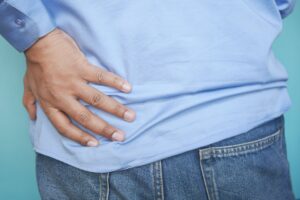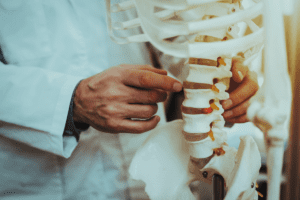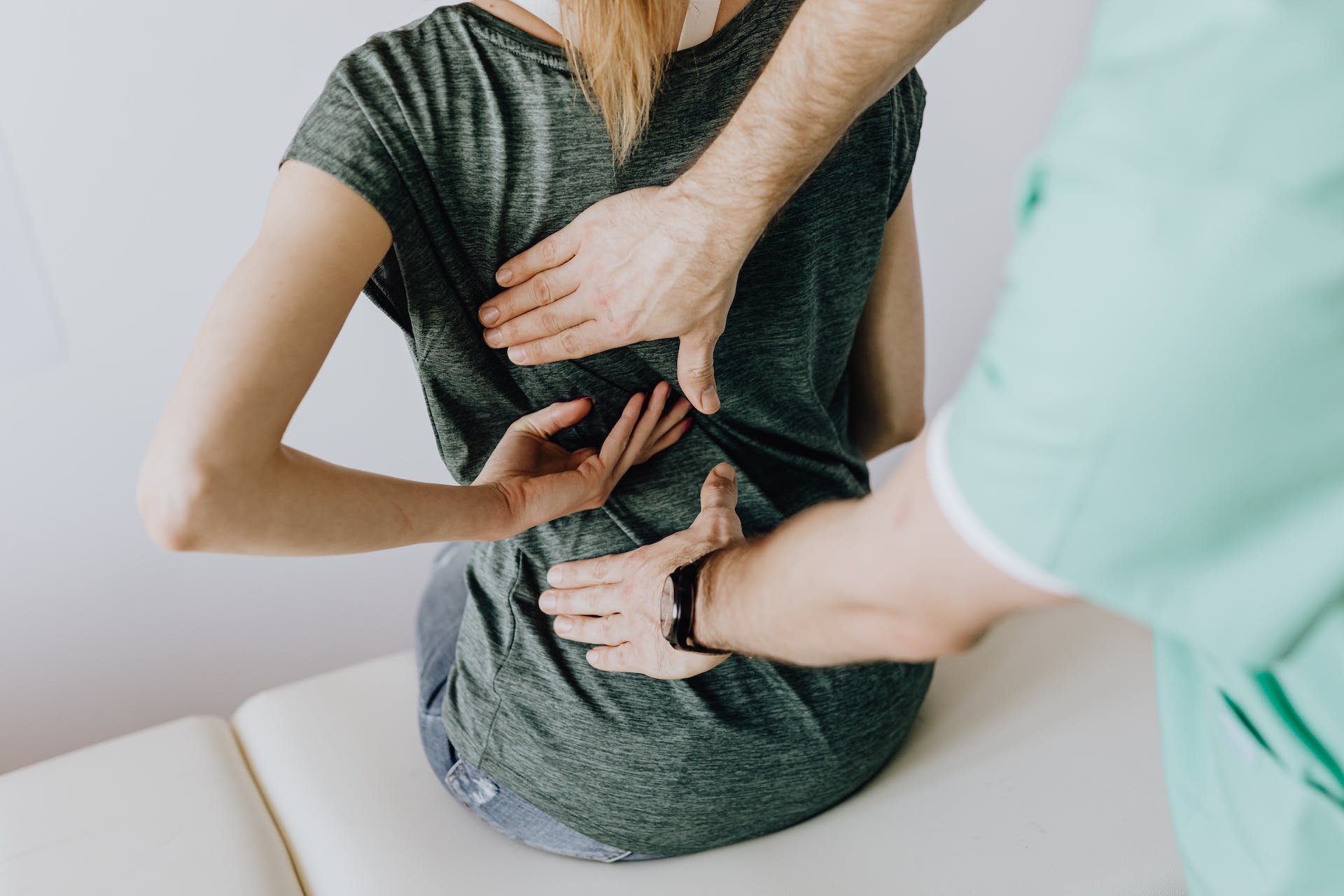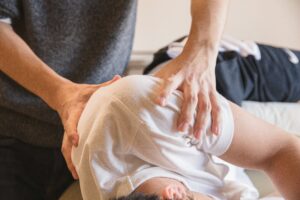Hip vs. Back Pain: Tips for Accurate Diagnosis and Treatment
Navigating the complexities of hip and back pain can be challenging. Often, the symptoms are so similar that it’s difficult to tell them apart. This comprehensive guide aims to demystify the two, offering clear insights into their symptoms, diagnosis, and treatment options. Understanding the nuances can lead to more effective management and treatment, whether you have a nagging backache or persistent hip pain.
Understanding Hip and Back Pain
Hip pain can manifest in various ways, often confusing patients who might mistake it for back pain. Common symptoms include groin, thigh, or buttocks discomfort, and the pain can range from a dull ache to sharp sensations. Early warning signs might include stiffness or reduced range of motion in the hip joint, especially noticeable in the morning or after sitting for long periods.
What are the First Signs of Hip Pain?
Hip pain often manifests initially as discomfort in the groin, thigh, or buttocks area. The nature of this pain can vary, ranging from a mild, nagging ache to sharp, stabbing sensations that may intensify with certain activities. Early indicators to be aware of include a feeling of stiffness or a noticeable decrease in the range of motion of the hip joint, particularly evident in the morning or after prolonged periods of sitting or inactivity.
These symptoms are important to recognize and differentiate from back pain, as they necessitate a specific approach to treatment. Identifying these early signs of hip pain is essential for timely and effective intervention, helping to prevent the progression of underlying conditions and maintain overall hip joint health.
What are the First Signs of Back Pain?
Back pain typically presents itself as a soreness or stiffness in the central spinal area. Common symptoms can range from a persistent dull ache to sudden, sharp pain. Early warning signs often include muscle spasms, decreased flexibility, and discomfort while sitting or standing for extended periods. It’s crucial to distinguish these symptoms from those of hip pain for effective treatment.
How Can You Tell If You’re Experiencing Hip or Back Pain?
Determining whether you’re experiencing hip or back pain is key to proper treatment. Pain location and characteristics are telling signs; hip pain is usually felt in the groin or front of the thigh, while back pain tends to be localized to the spinal column. Symptoms such as pain when bending often point to back problems, while challenges with specific movements, like getting out of a car, typically indicate hip issues. Activities triggering pain also provide clues; for instance, pain that intensifies with weight-bearing activities often points to hip issues.
Where is Hip Pain Felt?
Hip pain is typically felt in the groin area, radiating to the thigh and buttocks. Typical areas affected include the inside of the hip joint, and sometimes the pain may radiate down the leg, mimicking sciatica. This radiating pain pattern differs from back pain, which usually stays within the confines of the lower back.
Where is Back Pain Felt?
Back pain is primarily felt along the spinal column, especially in the lower back. Typical areas affected include the lumbar and sacral regions. The pain may radiate outward but is less likely to travel as far down as the legs, except in cases of sciatica, which can mimic hip pain.
Managing Pain Effectively
Effective pain management for hip and back pain involves a combination of home remedies, exercise, and lifestyle modifications. These approaches aim to alleviate discomfort, improve mobility, and prevent further injury, allowing for a better quality of life.
What is the Best Way to Relieve Hip Pain?
Relief for hip pain can start at home with home remedies like ice packs and rest. Physical therapy techniques, including stretching and strengthening exercises, can greatly aid in recovery. Implementing lifestyle changes such as weight management and proper ergonomics at work can also play a crucial role.
How Do You Relieve Lower Back and Hip Pain?
An integrated pain management strategy is often the most effective for lower back and hip pain. This includes a combination of exercise, posture correction, and heat and cold therapy applications. Maintaining a healthy weight and regular physical activity are key components of this approach.
Advanced Treatment Options for Back and Hip Pain
When standard pain management methods are insufficient, advanced treatment options, including professional therapies and possibly surgery, become necessary. These treatments are tailored to address severe or chronic conditions, offering more specialized and comprehensive solutions for back and hip pain relief.
What is the Best Way to Relieve Back Pain?
Effective relief for back pain can be achieved through exercises focusing on strength and flexibility. Professional interventions such as chiropractic care or acupuncture may also be beneficial. Making ergonomic adjustments in daily life, like using a supportive chair or mattress, can prevent further aggravation.
When to Seek Medical Help for Back and Hip Pain
Recognizing the warning signs for serious conditions such as severe, unrelenting pain, numbness, or loss of function is crucial. The benefits of early intervention cannot be overstated, as they can prevent the progression of the condition. Consulting with specialists at an orthopaedic clinic like DMOS can provide targeted care.
Medications for Back or Hip Pain
For immediate relief, over-the-counter options such as NSAIDs can be effective. However, for chronic or severe pain, prescription medications may be necessary. Understanding each medication’s risks and benefits is important, ideally under a healthcare professional’s guidance.
Surgical and Non-Surgical Options
When conservative treatments fail, surgical options may be considered based on specific criteria like the severity and duration of symptoms. However, many patients find relief through non-surgical therapies like physical therapy or steroid injections. Understanding recovery expectations from each treatment option is important for making informed decisions.
Accessing Care and Support from DMOS
DMOS offers comprehensive urgent care capabilities for managing back and hip pain. Knowing when to visit urgent care versus when a condition warrants more intensive treatment, such as emergency room intervention, is essential. DMOS provides a range of follow-up treatments and ongoing support for managing chronic conditions or recovering from injuries. Their team of specialized orthopaedic professionals ensures patients receive the most appropriate and effective care for their specific needs.
FAQ About Hip Pain Vs Back Pain and Treatment at DMOS
How do I know if my hip pain is serious?
Hip pain is considered serious if it persists despite rest and home remedies, if it severely limits your mobility, or if other symptoms like swelling, redness, or warmth around the joint accompany it. A healthcare professional should also evaluate sharp, intense pain that comes on suddenly. It’s important to seek medical attention if you experience these symptoms to rule out conditions like fractures, arthritis, or infections.
Can exercises really help relieve back pain?
Yes, exercises can be quite effective in relieving back pain. They strengthen the muscles that support the spine, improve flexibility and posture, and increase blood flow to the back, aiding in healing and pain relief. However, choosing the right exercises and performing them correctly is crucial. Consulting with a physical therapist or a healthcare professional is recommended to ensure that your exercise routine is safe and effective for your specific condition.
When should I choose DMOS over the ER?
Consider visiting DMOS for back or hip pain that is chronic or non-emergency. DMOS is equipped to handle issues like persistent pain, strains, sprains, and minor injuries. However, for severe injuries, significant trauma, or when symptoms like loss of consciousness, severe breathing difficulties, or uncontrolled bleeding are present, an ER visit is more appropriate. DMOS is ideal for specialized, ongoing care, while the ER should be used for immediate, life-threatening emergencies.
Can I make any lifestyle changes to prevent back and hip pain?
Lifestyle changes can significantly reduce the risk of back and hip pain. Maintaining a healthy weight, staying active, and practicing good posture are key. Using ergonomic furniture and equipment is also important, especially if you spend long hours sitting or standing. Incorporating regular stretching and strengthening exercises into your routine can also help. Avoiding high-impact activities that strain the back and hips and wearing supportive footwear can further aid in preventing pain.
What should I expect from a consultation at DMOS for back or hip pain?
During a consultation at DMOS, you can expect a thorough evaluation of your pain and medical history. The healthcare professionals will conduct physical examinations and may request imaging tests like X-rays or MRIs to accurately diagnose the cause of your pain. Based on the findings, they will discuss with you the best treatment options, which might include physical therapy, medications, or in some cases, surgery. They will also provide guidance on managing your condition at home and may suggest lifestyle changes or exercises to aid in your recovery.
What lifestyle changes can I make to prevent hip pain?
Maintaining a healthy weight, engaging in regular low-impact exercises like swimming or cycling, and practicing good posture can help prevent hip pain. It’s also important to avoid activities that strain the hip joints excessively.
How can I tell the difference between hip pain and sciatica?
While hip pain is generally localized in the groin, thigh, or buttocks, sciatica typically causes pain that radiates from the lower back through the buttocks and down the leg. Sciatica often feels like a burning or tingling sensation and can be accompanied by numbness.
Can stress contribute to back pain?
Yes, stress can contribute to back pain. Stress can lead to muscle tension, exacerbating back pain or triggering new pain. Practicing stress-reduction techniques like deep breathing, yoga, or meditation can be helpful.
Are there any specific exercises to avoid if I have back pain?
High-impact exercises, heavy lifting, and exercises that involve twisting the spine can aggravate back pain. It’s best to consult with a healthcare professional for a safe exercise regimen tailored to your specific condition.
How long does it typically take to recover from hip or back pain?
The recovery time for hip or back pain varies depending on the cause and severity. Minor strains may heal within a few weeks, while more severe conditions may take several months. Consistent treatment and following medical advice are crucial for recovery.
Is it better to rest or stay active with back pain?
While rest is important in the acute phase of back pain, prolonged inactivity can hinder recovery. Staying gently active, as advised by a healthcare provider, is generally recommended to aid recovery and maintain the strength and flexibility of the back muscles.
What signs should I see a doctor for my hip or back pain?
If your pain is severe, persistent, or worsening, or if it’s accompanied by symptoms like numbness, tingling, weakness, or loss of bladder or bowel control, you should see a doctor. Additionally, if you have a history of cancer, osteoporosis, or recent trauma, medical evaluation is advised.
The DMOS Spine Center
Our highly skilled team at DMOS has the experience and expertise necessary to provide quality orthopedic care, including addressing back pain. DMOS is the ideal place for people suffering from acute low back pain, chronic low back pain, upper extremity pain that could be from the cervical spine, or lower extremity pain that could be from the lumbar spine. If you need an appointment, please call our Spine Center at 515.224.4232 to request an appointment with one of our specialists. You may also walk into one of our Urgent Injury Clinics which are open six days a week.
*Patients with traumatic low back pain or neck pain who might have a fracture or dislocation are more appropriate for an urgent emergency room evaluation initially.
*Disclaimer: The content of this blog is for informational purposes only. Please consult your healthcare professional for any medical questions. While we make every effort to ensure the information we share is accurate, we welcome comments, suggestions, or corrections of errors. This blog should not be used in any legal capacity whatsoever, including but not limited to establishing a “standard of care” in legal sense or basis for expert witness testimony. No guarantee is given regarding the accuracy of any statements or opinions made on this blog or website. In no way does listening, reading, emailing, or interacting on social media with our content establish a doctor-patient relationship. This blog is not medical advice. If necessary, please seek treatment immediately*







